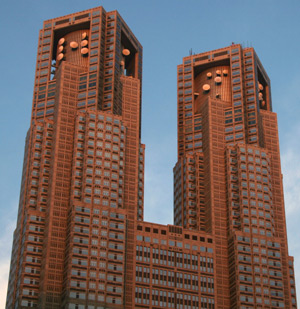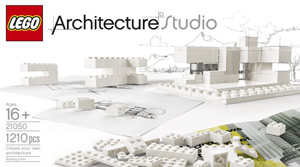Examples of Postmodern Architecture
Postmodern architecture replaces structured modernist form and function with an eclectic mashup of borrowed styles. This page contains a collection of the most famous postmodern buildings organized by architect, as well as an image gallery and links. For more information on the history of postmodern architecture, see our related article Postmodern Architecture Explained.
Images
Photos by City (@Flickr)
Amsterdam,
Berlin,
Chicago,
London,
Las Vegas,
Los Angeles,
New York,
San Francisco,
Shanghai,
Tokyo
Other Links on Postmodern Architecture
Postmodern Architecture
- Definition at Wikipedia, the free encyclopedia:
"Postmodernity in architecture is said to be heralded by the return of "wit, ornament and reference" to architecture in response to the formalism of the International Style of modernism...
architects rediscovered the expressive and symbolic value of architectural elements and forms that had evolved through centuries of building which had been abandoned by the modern style"
Crystal Cathedral
- Official home of the Crystal Cathedral by architect Philip Johnson.
Update 8/2013 - The Crystal Cathedral Ministries declared bankruptcy in 2010 and sold the building and campus to the Catholic Church for $57 million. The building was renamed "Christ Cathedral".
Lurie Tower
- Official web site at University of Michigan: "The Robert and Ann Lurie Carillon was built in 1996 on the university’s North Campus... it contains 60 bells, with the lowest bell weighing 6 tons."
Modern and Postmodern Architecture
- Overview at the New Georgia Encyclopedia, featuring Michael Graves:
"a late 1960s to early 1970s "postmodern" reaction ensued, led by a younger generation of architects.
They included, most notably, Michael Graves, whose works in Georgia include the 1984 renovation of Emory University's Lamar School of Law"
Should Portland Save a Building It Really, Really Hates? - Despite being a piece of postmodern history, the Portland Building by Michael Graves is unpopular with the locals and facing $95 million in renovation costs. It was also, in Graves own words, built with a budget that was "lower than a spec house would be built for in the suburbs" and is facing calls for its demolition.
3 Chicago Postmodern Architectural Icons - Article that features the three most recognizable postmodern landmarks in the city of Chicago: the Harold Washington Library, the James R. Thompson Center, and the Crain Communications Building.
Postmodern Architecture Photos
- General collection of photographs (@Flickr)
Postmodern Architecture Models
- 3D Models using Google's Sketchup tool
Top Books on Postmodern Architecture
The Story of Post-Modernism: Five Decades of the Ironic, Iconic and Critical in Architecture
- Charles Jencks provides the defining account of Post-Modern architecture, from its earliest roots in the early 60s to the present day.
Complexity and Contradiction in Architecture
- Venturi's "gentle manifesto for a nonstraightforward architecture", Complexity and Contradiction in Architecture expresses in the most compelling and original terms the postmodern rebellion against the purism of modernism.
Learning from Las Vegas: The Forgotten Symbolism of Architectural Form
- Classic book by Robert Venturi's, calls for architects to be more receptive to the tastes and values of "common" people and less immodest in their erections of "heroic", self-aggrandizing monuments.
Irony; or, The Self-Critical Opacity of Postmodern Architecture
- A look at five individual architects (Peter Eisenman, Arata Isozaki, Rem Koolhaas, Stanley Tigerman, and Robert Venturi) reveals the beginning of a phenomenology of irony in architecture.
Architecture After Modernism
- An examination of the architectural world and its theories since the late 1960s in the context of social and political issues.
Architecture's Historical Turn: Phenomenology and the Rise of the Postmodern
- Traces the hidden history of architectural phenomenology, a movement that reflected a key turning point in the early phases of postmodernism and a legitimating source for those architects who first dared to confront history as an intellectual problem and not merely as a stylistic question.
Architecture on the Edge of Postmodernism
- As a preeminent force in the discourse of the field, Stern was one of the first critics to use and analyze the term “postmodern” in architecture. This collection of essays—Stern’s first—brackets the years defined by the changes in architectural thinking introduced by Robert Venturi in 1966 and the exhibition Deconstructivist Architecture at the Museum of Modern Art in 1988.
























